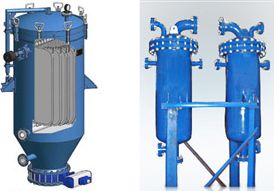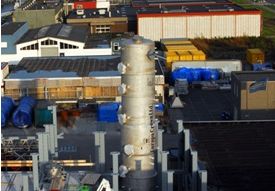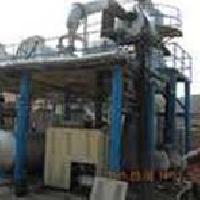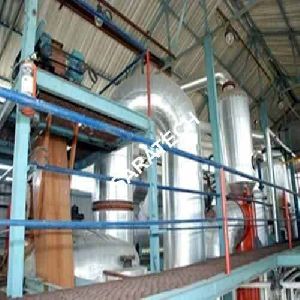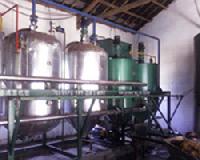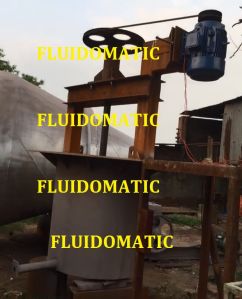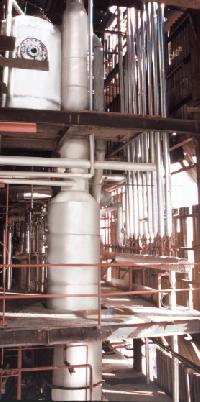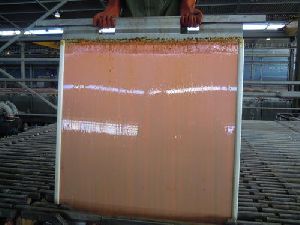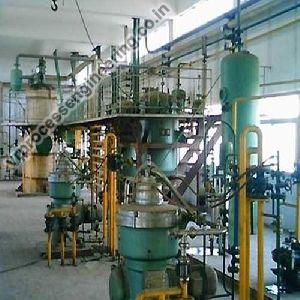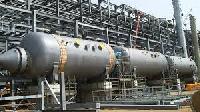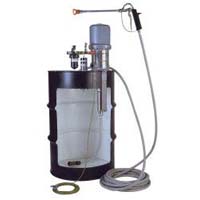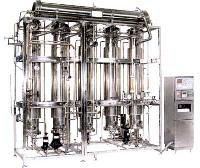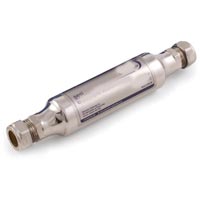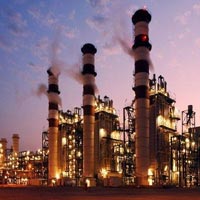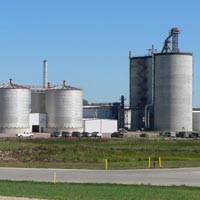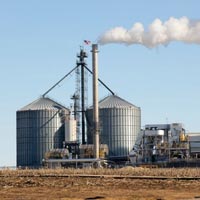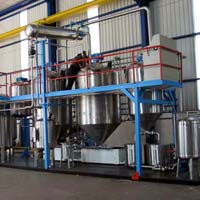Listing ID #2453944
Company Information
Ask for more detail from the seller
Contact SupplierDegumming & Neutralizing : Crude oil is delivered to the system by the Feed Pump. It is heated to 65 - 70 C in the Crude Oil Economizer by hot oil from down-stream bleaching/deodorizing operations or, when necessary, by steam in the Feed Heater mixed with pre calculated quantity of Phosphoric acid in a gum conditioning mixer the pre calculated quantity of water is added. Oil water mixture is fed to hydration tank to give sufficient residence time for gums to agglomerate on hydration. This oil is then pumped to separator where the oil and hydrated gums are separated and pumped to storage or disposal or gum drying plant in case of soybean gums.
In the case of water degumming process, crude oil is heated to required temperature in the plate heat exchanger, mixed with pre calculated water through mixer and fed to the hydration tank for sufficient residence time for gums to agglomerate. Then it is pumped to separator where oil and hydrated gums are separated.
Water degummed oil from separator is pumped to plate heat exchanger where oil is heated to neutralization temperature i.e. around 80 to 85 Deg C. The hot oil is fed to mixer with requisite quantity of phosphoric acid where oil and phosphoric acid is allowed a brief holding time and the precipitation of trace metals take place.
Degummed oil is fed in to mixer where it is mixed with calculated quantity of caustic soda solution of suitable strength. Free fatty acid reacts with caustic soda to form soap . The reacted oil is sent to the Gum/Soap Separator . The precipitated impurities are removed from the oil as water based heavy phase referred to as soap stock. The gums/soap are collected in the Heavy Phase Receiver and sent to intermediate storage by the Heavy Phase Pump.
Water Washing : The residual soap in the degummed & neutralized oil is reduced by water washing. In this case the oil from the separator is heated to about 95 C in the Washing Heater and then mixed with 10 - 15% soft water in the Wash Mixer. After a few minutes retention in the Wash Reactor the wet oil enters the Wash Water Separator. The washed oil, typically containing under 100 ppm soap and with a reduced level of phosphorus, is sent directly to bleaching as described above. The heavy phase soapy water is collected in the Recovered oil tank and drained to Effluent treatment.
Vacuum drying : Washed oil is fed continuously to the Vacuum dryer and sprayed through specially designed nozzles. The vacuum dryer is kept under a vacuum of 70 torr. The dried oil from the vacuum chamber is continuously pumped out by pump to intermediate storage tank.
Bleaching : The feed oil (acid conditioned, degummed / neutralized & washed) enters the Bleacher via a Bleaching heater where the oil is heated up to Bleaching temperature and discharged into the slurry mixer. A valve dosing system proportions bleaching earth. The earth is introduced under the oil spray in the mixing chamber for improved mixing so that earth does not enter the Bleaching Vacuum System. The earth adsorbs any residual gums and soap as well as trace metals, color bodies and other polar impurities. The Bleacher has multiple agitated compartments and operates under vacuum to ensure complete moisture and air removal. The dried oil and earth mixture is discharged by the Bleacher Discharge Pump to one of the Filters where the spent earth is removed. The filtered oil is collected in the Filtrate Receiver. The Bleached Oil Pump sends the oil to Deodorizing via one of the alternating Polish Filters.
Filter Management : The standard bleaching system is based on the use of two filters of which one is on line while the other is being cleaned and prepared for the next cycle. When a filter has reached its maximum capacity, as indicated by high feed pressure, it is taken off line for cleaning and replaced by the other filter.
The cleaning procedure begins by first pressurizing the filter with steam to expel residual oil into the Recovered Oil Tank and dry the spent filter cake. The oil recovered from the filter cake is collected in the tank and can usually be recycled to the Bleacher. After drying, a bottom discharge valve on the filter is opened and the leaves pneumatically vibrated so that the spent cake is dislodged and discharged via a hopper. The filter is then closed and readied for the next batch. Before going on line again it can be pre-coated with filter aid and/or bleaching earth in order to seal the filter leaves and minimize clogging. The adsorbents are mixed with bleached oil in the Precoat/Heel Tank and applied to the leaves by circulation with the Precoat Pump. When not using filter aid or �off-line� pre-coat, the empty clean filter is filled and put on line while the other filter is still in operation. The filtrate from the clean filter is recycled back to the Bleacher until the filter is pre-coated with bleaching earth and the oil is clear. After this the full flow is switched to the new filter.
Dewaxing : After De-gumming, Neutralization, water washing, vacuum drying and bleaching the Dewaxing is done. Initially the oil is cooled by cooling tower water to around 35 Deg C , from 35 Deg C the oil is cooled by out coming chilled oil to 20 Deg C . This oil is then cooled to 8 Deg C by using Propylene glycol as cooling media. This oil is then feed to crystallizer for Crystal growth. A proper residence time is given to have a good crystal growth, after the waxes gets crystallized the oil is subjected to filtration. This dewaxed oil passes the cold test which gives clarity to oil even at lower temperature.
Deodorisation : Bleached oil is continuously pumped from the Feed Tank by the Deareator Feed Pump. The oil is pre-heated in the Deaerating Economizer by outgoing deodorized oil followed by the Deaerating Heater (if necessary) before entering the Deaerator. The vessel is under full vacuum, so that residual air is reduced to an absolute minimum. The Deaerator Discharge Pump sends the oil through a Heat Economizer where the temperature is increased by hot deodorized oil. The oil is heated to full processing temperature in the Vacuum Heater by thermal fluid from the Thermal Oil Heater. A portion of the free fatty acids in the oil will be flashed off as the oil temperature increases.
Stripping : The hot oil enters the Packed Column, which is filled with special structured packing so that the oil is distributed into a thin film and is evenly agitated by stripping steam flowing counter currently from the bottom of the column. As a result, free fatty acids and other remaining volatile impurities in the oil are evaporated and removed with the steam. The residence time in the column is only a few minutes. The bulk of the free fatty acids along with aldehydes, ketones etc. in the oil are quickly stripped off before any heat induced permanent damage has been done.
Deodorizing : The stripped oil from the column flows into the Deodorizer where it flows through the channels of a series of vertically stacked compartments (trays) while agitated by stripping steam. The prolonged thermal action breaks down carotene and other color bodies, resulting in a lighter oil color. Also, the amount of remaining free fatty acids in the oil is reduced to an absolute minimum. The stripping steam passes through the packed column and no separate steam is required in the stripping column. The maximum retention time in the Deodorizer is 70 minutes.
Cooling : The deodorized oil is discharged into the Deodorizing Economizer and cooled by incoming oil. The oil is then discharged by the Product Pump and further cooled to storage temperature in the Deaerating Economizer and Product Cooler. The anti-oxidant is mixed with oil in the Deodorizing Economizer. The finished oil is finally sent to storage via one of the alternating Product Filters.
Distillate Recovery : Fatty acids and other materials, evaporated from the oil, are condensed by contact with recycled and cooled distillate in the Vapor Scrubber. The distillate is circulated by the Distillate Pump via the Distillate Cooler where it is cooled by cooling water. Accumulated distillate is discharged from the Scrubber to storage.
Trans and Tocopherol : The high efficiency (low amount of stripping steam) and short retention time of the stripping column, combined with the possibility to reduce the heat bleaching time or temperature, ensure optimum conditions for controlling the process. The oil can thereby be properly deodorized without the creation of trans fatty acids while also controlling the amount of tocopherol removed from the oil.
Protection against Air Contamination : For optimum quality, especially when processing unsaturated oils, the oil should be protected from air contamination during the entire deodorizing process. The packed column type Deareator ensures maximum removal of dissolved air before high temperature heating. This also helps minimize polymerization of the oil on the inside of the heat exchange coils of the heat Economizer.
Process Control : The control, operation and supervision of the plant can be handled by one operator per shift. All main process parameters, if required, e.g. flow rates, temperatures, liquid levels etc. are automatically maintained from a control panel or, as an option, with the help of PID/PC based controls.

